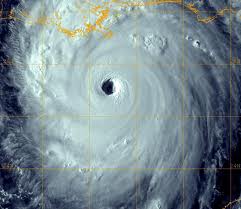 |
| ZEITOUN by Dave Eggers |
As Hurricane Katrina was approaching New Orleans, Kathy and the Zeitoun children evacuated to Baton Rouge, while Zeitoun remained in New Orleans to oversee his home, his rental properties, and the properties of his clients. After the hurricane, Zeitoun found a working telephone line and called Kathy faithfully every day at noon. Zeitoun also owned a canoe and used it daily to rescue people trapped in their houses.
However, about a week after the hurricane, Zeitoun had the misfortune to be arrested for "looking suspicious." As a Hurricane Katrina arrestee without proper processing, he fell into "a black hole" in the prison system. The only thing that Kathy and the Zeitoun children knew was that Zeitoun's daily noon-time telephone calls suddenly stopped.
The book ZEITOUN had gripped us so strongly that we wanted to visit the sites that were important in Zeitoun's Hurricane Katrina experience. Our van tour included the following sites.
- RESCUES AND PHONE CALLS: In our van, we followed Zeitoun's canoe route so that we could actually see the places where Zeitoun had stopped to rescue people and to make his daily telephone calls to his family.
- THE CLAIBORNE / POYDRAS OVERPASS: We drove over the Claiborne / Poydras overpass, where Zeitoun had met and spoken with survivors who were waiting, unsheltered in the sun, for buses to take them out of the city. Many dogs were also on this overpass. Zeitoun had returned later in his canoe to find that all the people had been taken away and that all the dogs had been shot.
- STAGING AREA: We drove past the staging area where official boats had been sent out each day to find and rescue people on roof-tops and where Zeitoun had been taken after his arrest to be transported to a temporary jail.
- CAMP GREYHOUND: This was perhaps the most impressive site on our van tour. We stopped to visit the New Orleans Union Passenger Terminal, where Amtrak trains and Greyhound buses arrive and depart. Called Camp Greyhound in the weeks after Hurricane Katrina, this terminal had been transformed into a temporary jail for anyone arrested in the post-hurricane chaos. Arrestees like Zeitoun had been placed into outdoor cages to await transportation to larger prisons.
The photo below shows Camp Greyhound in the weeks after Hurricane Katrina.
 |
| Camp Greyhound in the weeks after Hurricane Katrina |
The New Orleans Union Passenger Terminal has an amazing four-wall mural depicting scenes from the history of New Orleans. Newly arrested and frightened, Zeitoun had been struck by the darkness and violence of some of the scenes. A scene from the mural appears below.
 |
| Scene from mural at New Orleans Union Passenger Terminal, the site of Camp Greyhound in the weeks after Hurricane Katrina |
This impressive van tour concludes our study of Hurricane Katrina and of the book ZEITOUN by Dave Eggers. Our thanks to LIEP instructors Karen Greenstone and Leo Rocha for planning and driving for our tour.
Our next post will take you with us as we visit Mardi Gras World, the den where Mardi Gras floats are prepared and decorated. We will hear about the history of Mardi Gras, try on elaborate Mardi Gras costumes, and watch the artists at work as they apply finishing touches to the floats.


